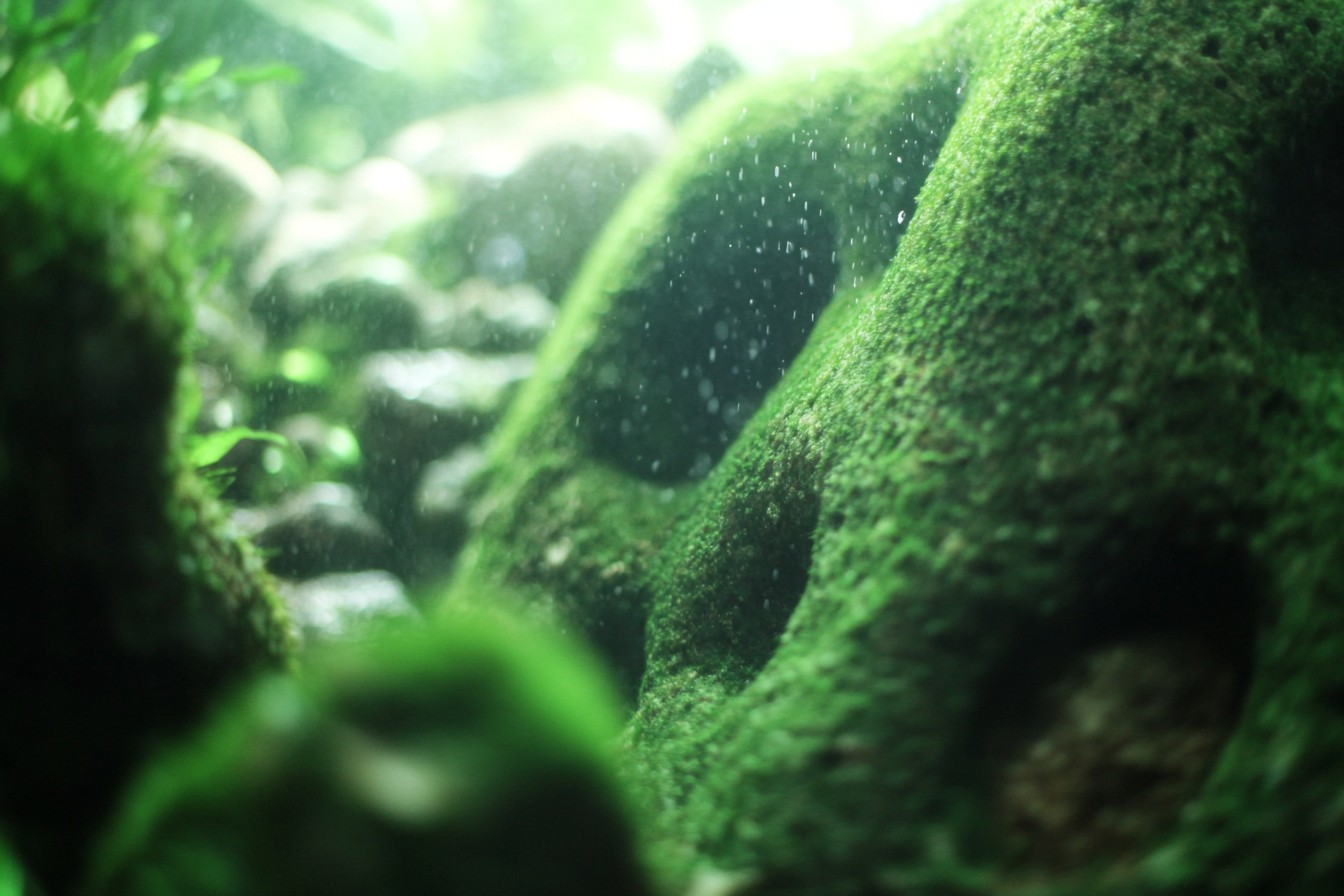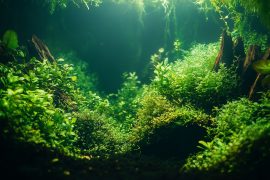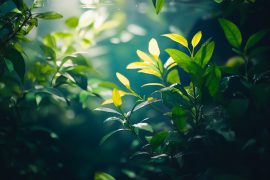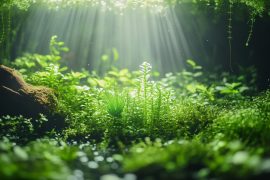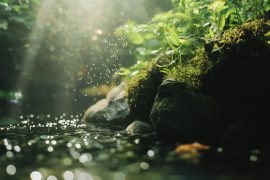I will never forget how, about a year ago, I set up a Rio Negro blackwater tank in the waiting area of an upscale dental office. In one of my monthly maintenance visits, I had the chance to listen to one of the receptionists talk to a patient who had just come back from an Amazon River cruise. One of the things that struck me was when, in one of his exclamations, he revealed, “That’s exactly what it looked like underwater!” He then went on to add, “Even the fallen leaves on the bottom.” The look of realization on his face, combined with my aquarium inspiration that replicated worlds far away – that is the beauty of biotope aquascaping.

In the past, I had never paid much attention to geographic accuracy. The contents of my first few tanks were paradigm examples of a mixed–up region: Japanese stones, Malaysian driftwood, African cichlids and South American plants arranged into an ensemble that was nonsensical, but, for some reason still enchanting. The epiphany I suffered came when I stumbled upon a true reproduction of a Southeast Asian blackwater stream at an Orlando shop. The tank’s story was consistent: from the water’s coloration, the leaf litter, right down to the little rimbursement darting beneath the roots. It was less an aquarium than a portal to another place.
Constructing a ‘complete’ biotope is as difficult as resetting the individual characteristics of an ecosystem. And yes, in a way, being a purist biotope soccer does include that sensibility. The amazonian stream edge featured a 20 gallon tank and was my very first serious attempt. Along with it came excited planning: fishing expeditions to the local lakes and rivers logos, shrubs which were located along the water bodies, and the gravel used in filling them.
For a biotope to be captivating it doesn’t have to be completely scientifically accurate. Rather, having the spirit of the place is much more important: My apartment currently contains what I affectionately refer to as the “Rio Nanay tributary” tank. Is it an exact replica of that specific river branch in Peru? Certainly not, because doing that in a 40 gallon glass box would be impossible. Nevertheless, through selective incorporation of some key features such as the water’s tannin content, the sandy leaf debris, the roots, the species of the cardinal tetras and dwarf cichlids, it is possible to construct an illusion which would enable the observer to move to the desired ecosystem.
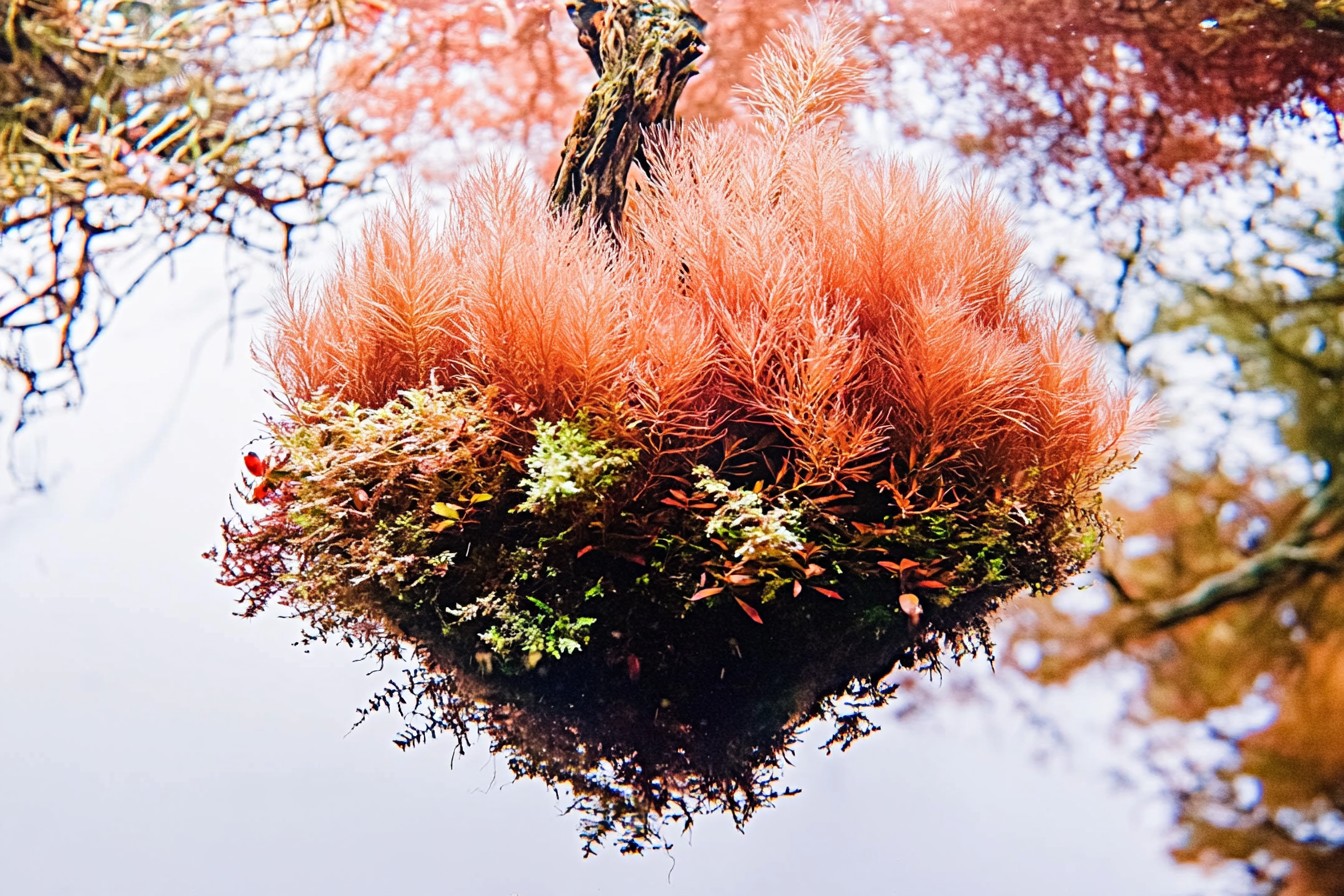
As for planning a biotype, I start from having an extensive pool of information, which in this case means research. It is not merely a matter of using Google to search “Amazon fish” and being done. It consists of reading scientific articles, travel blogs from aquarists who have visited these places, and videos that show underwater views of relevant rivers. One time my girlfriend caught me at two in the morning with a low definition video of a guy snorkeling in a Borneo stream, and I was constantly taking screenshots of what I thought was the substrate. “This is why you’re single,” she exclaimed. “I’m literally right here,” I said without taking my eyes off the screen.
The hardest part is often finding hardscape pieces that fit your target location. Not all driftwood is the same. An Southeast Asian tank needs the bizarre, troll-like mangrove roots endemic to that region, while an African Great Lakes biotope requires the cracked, weathered stones from the ancient waters of their biotic basin. I’ve been known to spend more time than is socially accepted at landscape supply yards, scrutinizing the “diamonds” of the rock world to the delight of the staff.
Many substrate options are ignored, but are in fact very important. Many hobbyists fail to capture a specific theme in their aquarium and constitute it based on whatever commercial gravel they have on hand. My African Rift Lake tank is themed around the geological features of East Africa. Along with aesthetic appeal, the tank has a biological aspect: crushed coral and aragonite sand are used as substrates, which not only makes the tank look correct but also maintains high alkaline levels necessary for the cichlids. My blackwater tanks have a thin layer of fine sand laced with rotting vegetation and seed pods like murky water leaves endlessly swirling around on the ground where seasonal flooding generates these captivating bioscapes.
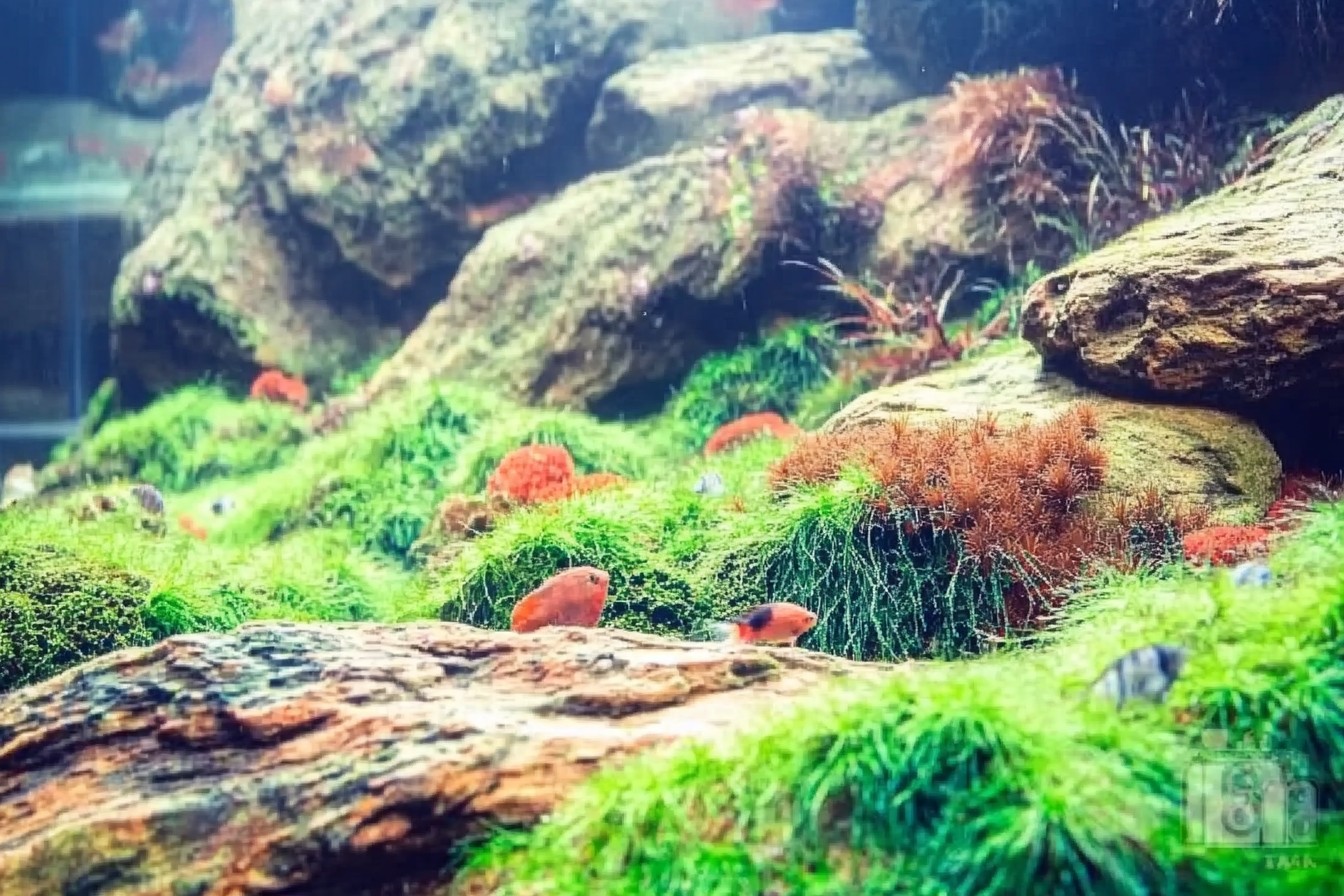
Biotope builders get serious where most casual aquascapers draw the line. Setting up soft-acidic water conditions for an Amazonian tank or hard-alkaline water for African cichlids is not purely aesthetic; it concerns the wellbeing of your livestock. My target area’s parameters inform my remineralization strategy. I use reverse osmosis water as a blank canvas and remineralize to fit my target region. My tap water is liquid rock at an 8.2 pH, fantastic for my Lake Tanganyika setup, but would be torture for my cardinal tetras.
Speaking of livestock, this is the zone where biotope building gets both controlling and freeing. Controlling because you’re restricted to species that coexist naturally, but freeing due to the simplification of the decision-making process. No need to stress over whether the gorgeous gourami would go well with your existing tetras; if they aren’t from the same region, the decision is made for you. Some of my most successful community biotope tanks have been strict biotopes because the fish naturally understand each other’s behavior and occupy compatible niches.
In biotope aquascaping, plants provide a unique challenge. The fact is, many of the most common aquarium plants are not actually found growing in water – they are bog or emergent plants that we try to make to into submersed plants. A scientifically true Amazonian river biotope would have very few true submersed vegetation. I make a concession to use at least plants that come from the right region, even if they tend to flourish on the banks or partially submerged. My tank with Brazilian stream biotype is dominated by various species of Echinodorus and Anubias (admittedly, they are African, but I only use fully as submerged Anubias placed on the emergent parts of driftwood).
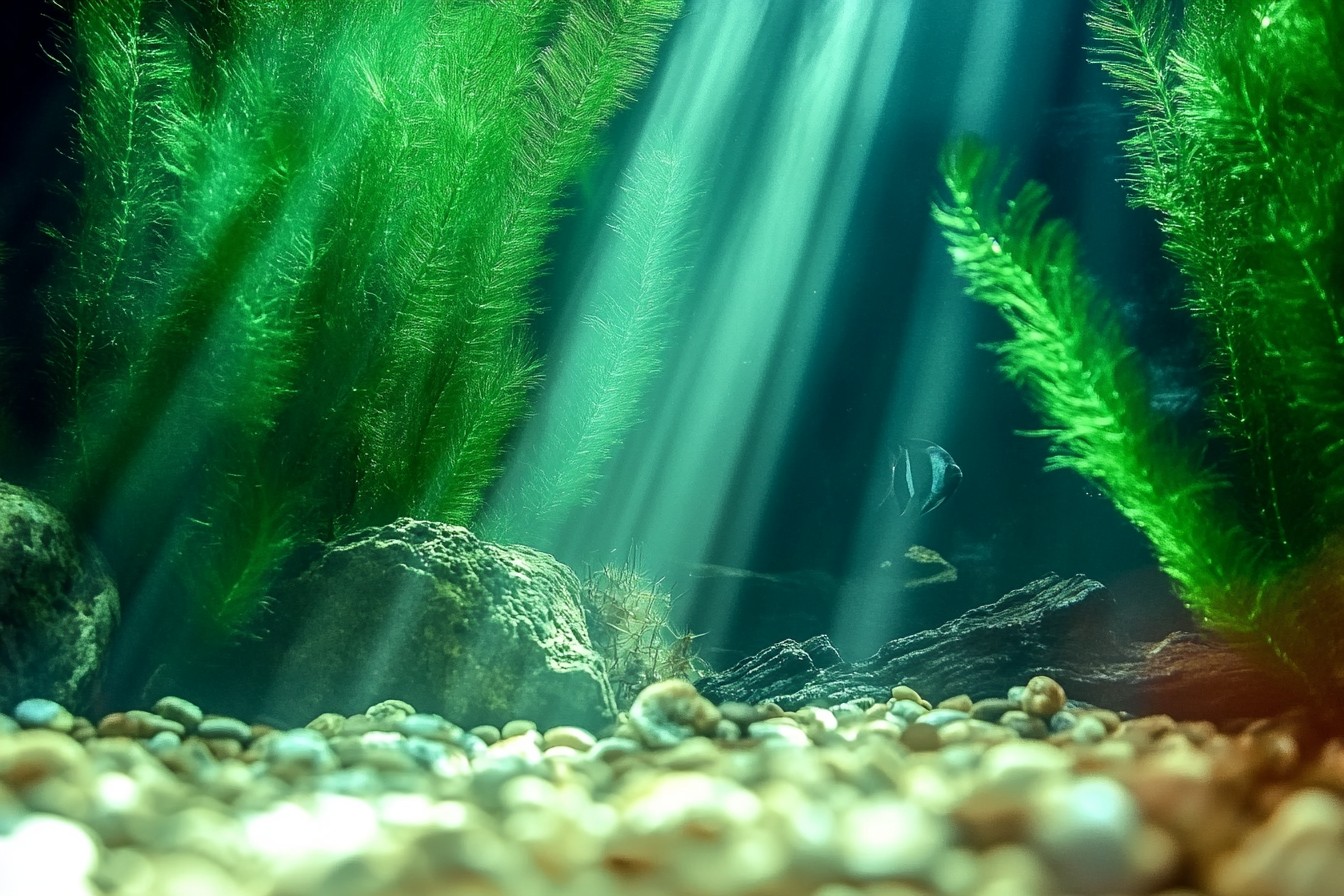
Seasonal adaptations are yet to be explored by some aquascapers, but they infuse an additional aspect of realism into aquascaping. Most natural waters undergo some cyclical changes through the year – water levels increase and decrease, clarity changes, even temperature changes. In my Rio Negro tank, I actually dry the tank by lowering the water level slowly over a few weeks, exposing more of the driftwood while concentrating the tannins, and then mimicking the rainy season refill by slowly filling the tank. The fish exhibit increased activity and sometimes go as far as spawning – they are conditioned to respond to these cues.
The most asked question I get regarding biotopes is “Aren’t they uninteresting to gaze at? It is a reasonable inquiry. An accurate African cichlid biotope aquarium has almost no plants and an overwhelming amount of rocks. A blackwater Amazonian biotope is, well, the color of weak coffee with minimal vegetation. However, there is sophisticated charm in these distinctive environments that grows on you. Unlike a Dutch-style planted aquarium which is instantly visually appealing, my blackwater tank lacks the immediate impact. But it features depth, mood, and an enigmatic quality that makes people want to stick around. Their initial response is seldom an amazed “Wow!”, rather, it’s a more reflective “Hmmm…” followed by a sequence of wonder-filled inquiries.
The pleasure is more satisfying from observing how my fish behave in the rare exhibits as compared to traditional aquariums. For instance, my Apistogramma pair in the Amazonian tank actually uses the leaf litter to build nests, as they would do in the wild. In my Tanganyikan setup, the shell-dwelling cichlids defend their territories using complex behaviors that are rarely seen in community tanks or among other fish—rearranging the shells they live in. These fish have greater purpose beyond mere ornaments – they tell through motions, their native environment and live like their actual, untamed counterparts.

They also serve as a great example of biotope tanks where is conventional aquascapes lack are, conversation starters. Take that dental office tank, for example; it has brought patients into the practice who share travel anecdotes, showing concern for wildlife, and as a result building an emotional bond to far-off places. These small glimpses into different ecosystems allow people who feel increasingly disconnected from the rest of the world, form unexpected bonds with that specific strip of nature.
In some respects, are biotope aquascapes more challenging? Definitely yes; the research part alone is daunting enough. More difficult is collecting accurately-suitable hardscape materials for the region, which at times, seems like looking for a needle in a haystack. Like in many community tanks, there’s a marketing-standard water parameter tailored to fit all polyboxes, but keeping to specific measurements needs meticulousness. On the other hand, achieving a well-executed biotope is quite difficult, and there is a coherence one loses with almost any other approach.
I still create different types of aquascapes – my home office features a non-biotope nature aquarium that is a tribute to Takashi Amano’s style. However, it’s the biotopes that continue to pull me in, make me challenge myself, and learn more about the specific ecosystems I wish to capture accurately. Every single one is an artistic endeavor and a personal lesson. They represent fragments of nature’s marvels that many people will never get to witness firsthand.
Maybe this is where biotope aquascaping is most fascinating – creating something intricate in an aquarium has little significance when the beauty within encompasses a glass box. The beauty lies in preserving the spirit of feral locations, some of which are endangered or, rather, nonexistent. When that particular patient pointed out my Rio Negro tank, the connection he felt was not, only to my aquarium but to the real place it depicted. It made that distant ecosystem feel a little closer, more real, and even more worth conserving. Not bad for a dental office fish tank.
